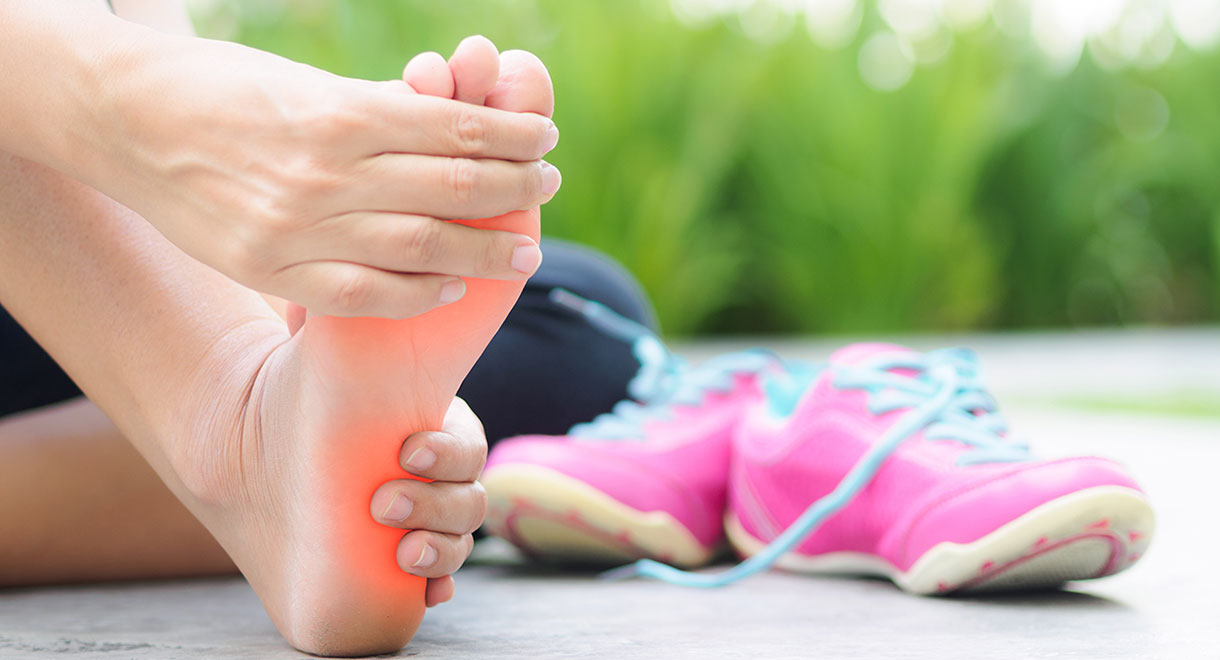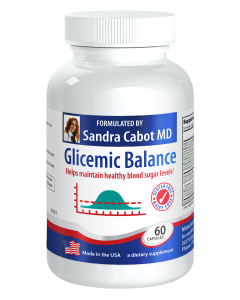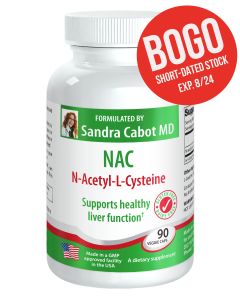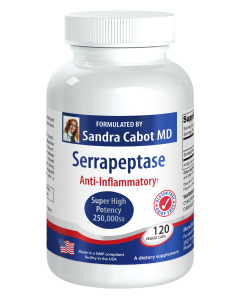

Why Are The Soles Of My Feet So Sore?
Do you hobble out of bed every day because your feet hurt so much to step on first thing in the morning? Or are your feet too painful to walk on if you’ve been sitting for several hours and then try to get up and walk? It could be plantar fasciitis.
Plantar fasciitis is one of the most common causes of foot pain in adults. It is caused by a strain of the ligaments in an area of the foot called the plantar fascia. This is a thick, pearly white tissue with long fibers that begins at the heel bone and then fans out along the under surface of your feet to the toes. The ligament provides support as the toes bear the body’s weight each time the heel rises during walking.
As you know, our poor feet have to withstand a great deal of strain each day as we walk on them, run on them, stand all day, or squeeze our feet into uncomfortable shoes.
The most common symptom of plantar fasciitis is pain beneath the heel and sole of the foot, but the pain can be felt anywhere along the underside of the feet. The pain is usually worst when initially stepping onto your feet, particularly when first getting out of bed in the morning or when getting up after sitting for some time.
Fortunately, there is a lot that can be done about this common condition.
Who is most at risk of plantar fasciitis?
Plantar fasciitis is most common in runners, but can occur in anyone and there are several other risk factors, including:
- Wearing incorrectly fitting or inappropriate running shoes
- Running on excessively hard or unstable surfaces
- Weakness in the muscles of the feet
- Having flat feet
- Being overweight
- Having high arches
- Having excessively high levels of inflammation in your body due to poor diet (e.g. high in sugar) or immune system problems
Recommended treatment
The conventional treatment of plantar fasciitis involves rest, icing, stretching, taping, the use of anti inflammatory medication, weight loss, physiotherapy, stretching and correction of footwear and biomechanical imbalances, such as the use of orthotics. Cortisone injections are sometimes used in unresponsive cases, although they are usually not very effective.
Foot biomechanical issues are certainly important to address; however, it is also critical to address internal factors.
If your body is highly inflamed, it’s not surprising that the ligaments in your feet would also be inflamed. Systemic inflammation can be caused by several factors; the most common ones include poor diet, immune system disorders (allergies or autoimmune disease), chronic infections, diabetes and obesity (fat cells manufacture inflammatory chemicals), and having a fatty liver.
The most significant factor is diet.
Certain foods significantly raise inflammation in your body; these foods include gluten, wheat, sugar, alcohol, artificial additives, dairy products and any food you are allergic to. Getting rid of these foods from your diet can significantly reduce the level of inflammation in your body and, in that way, ease the pain in your feet.
Here are my recommendations
- Base your diet on vegetables, salads, protein and healthy fats. Pastured (grass fed) meat, poultry and eggs are high in omega 3 fats and have an anti-inflammatory effect. Good fats also help to reduce inflammation and they include olive oil, macadamia nut oil, avocados, pastured ghee and coconut oil. There is an eating plan based on these guidelines in my book ‘Fatty Liver: You Can Reverse It’.
- Get rid of sugar, junk food and gluten from your diet. These foods irritate your immune system and promote the growth of harmful bugs in your digestive tract. They are also addictive and promote hunger and cravings. It is a lot easier to avoid these foods if you are eating adequate protein and healthy fats because they are so satiating. If you really struggle with sugar cravings, Glicemic Balance capsules help to stabilize blood sugar and can make sticking to a healthy diet much easier.
- You may want to try Serrapeptase. This is a natural enzyme with a powerful anti-inflammatory effect in the body. It basically acts like Pac Man to clean up cellular debris in your body. In this way it reduces swelling and pain. It is gentle on the stomach and, in fact, needs to be taken on an empty stomach for maximum benefits.
- Glutathione is another anti-inflammatory substance but this one is made in your own body. It helps to mop up free radicals and in that way protects the tissues of your body from wear and tear or damage. Many people don’t produce enough glutathione because they don’t ingest sufficient levels of the building blocks required for its production. Glutathione is made from the amino acids glycine and cysteine, which are present in protein rich foods such as red meat (particular the skin and joints), seafood, poultry and eggs. Selenium is also required for glutathione production and many people don’t get enough of this vital mineral in their diet. Selenomune Designer Energy capsules provide selenium as well as other nutrients to improve energy and stamina. N-acetyl cysteine (NAC) is the precursor of glutathione and helps raise your blood level of this important substance.
- Find out if you have a food allergy or intolerance. If you continually eat a food your body is not able to tolerate, it places an enormous strain on your immune system and leads to elevated inflammation. You may need the help of a naturopath to work this one out.
- Drinking raw vegetable juice is a fantastic way to lower inflammation. Try to use a variety of vegetables and the more vibrantly colored, the better. Ginger, pineapple and turmeric are particularly anti-inflammatory.
Painful feet are an incredibly common problem that can be very frustrating. These recommendations should help, but please see your own doctor for an accurate diagnosis.
The above statements have not been evaluated by the FDA and are not intended to diagnose, treat or cure any disease.
Know someone who might benefit from this article? Share it!
54 Comments
Need Help?
1-888-75-LIVER
Monday to Friday, 9:00 am to 5:00 pm MST
100%
Satisfaction Guaranteed
If it’s faulty or wrongly described, we’ll replace it.














We have lots of tasty, simple sugar and dairy free breakfast recipes on our website.
Please see the link:https://www.liverdoctor.com/category/recipes-2/breakfast/
Kind Regards,
Jessah Robinson
Nutritionist for Liverdoctor.com
Also there is missing information, the sentence isn’t complete, my what? See below.
“There is an eating plan based on these guidelines in my .”
Thank you so much!
Thanks for your feedback.
The word 'satiating' is not a typo, it means 'filling'.
As for the other one, we will endeavour to fix this as soon as possible, thank you for bringing it to our attention.
Kind Regards,
Jessah Robinson
Nutritionist for Liverdoctor.com
I didn't have these problems before I started eating gluten free. I am starting to wonder if my diet has caused this problem?
It might be a good idea to see a podiatrist for a consultation.
You may benefit from taking
Magnesium Complete 2 tabs twice daily OR Magnesium Ultra Potent Powder 1/2 tsp twice daily as it is good for the nervous system and may alleviate pain.
These can be purchased here:https://shop.liverdoctor.com/
Let us know how you get on.
Kind Regards,
Jessah Robinson
Nutrition Consultant for Liverdoctor.com
We recommend you read this article for further info:https://www.liverdoctor.com/four-steps-to-healing-a-leaky-gut/
There is great information in Dr Cabot's book 'Healing Autoimmune Disease'.
Dr Cabot recommends you take
Super Digestive Enzymes 1 to 2 caps with a glass of water at each meal to improve digestion and absorption of foods.
Glutamine 1 tsp twice daily to help heal and seal the gut lining.
Berberine 1 cap three times daily with meals as it has powerful antimicrobial properties and helps to correct dysbiosis and SIBO which are a common cause of leaky gut.
These supplements can be purchased here:https://shop.liverdoctor.com/
Let us know how you get on.
Kind Regards,
Jessah Robinson
Nutritional Consultant for Liverdoctor.com
Our apologies.
The recommended supplement is Serrapeptase.
You can purchase it here:https://shop.liverdoctor.com/
Kind Regards,
Jessah Robinson
Nutritional Consultant for Liverdoctor.com
Please follow the recommendations in the above article.
The pain signals inflammation, so we recommend you remove inflammatory foods such as sugar, processed food, artificial sweeteners, gluten and high fructose corn syrup.
Dr Cabot recommends you take
N-Acetyl Cysteine (NAC) 2 caps twice daily at least 2 hours away from food, if any upset occurs please take with meals. NAC is the precursor to glutathione; the body's most potent antioxidant and can reduce inflammation in the body.
MSM Plus Vitamin C 1/2 teaspoon once or twice daily in a glass or water or juice to promote healthy joints and connective tissue and reduce pain and inflammation.
These can be purchased here:https://shop.liverdoctor.com/
Let us know how you get on.
Kind Regards,
Jessah Robinson
Nutritional Consultant for Liverdoctor.com
Thank you for your enquiry.
The enzyme we are referring to is Serrapeptase, here's the link:http://shop.liverdoctor.com/serrapeptase-250-000-iu-per-two-caps-60ct-veggi-caps.html
We will fix it right away.
Kind Regards,
Jessah Robinson
Nutritional Consultant for Liverdoctor.com
We recommend you eliminate processed food, all artificial sweeteners, all high fructose corn syrup, and all gluten containing foods from your diet. If you still have problems with your feet, please remove dairy foods to see if this brings about the necessary changes.
Replace these with home prepared meals with lots of fresh vegetables, moderate portions of protein, and at least 1 quart of water daily.
You may benefit from a consultation with a podiatrist.
Dr Cabot recommends you begin taking
Magnesium Ultrapotent – ½ teaspoon twice daily in a little water. Magnesium is a muscle relaxant and is efficient for maintaining muscle and nerve function.
N-Acetyl Cysteine (NAC) 2 caps twice daily at least 2 hours away from food, if any upset occurs please take with meals. NAC is the precursor to glutathione; the body's most potent antioxidant. It can reduce inflammation in the body and neutralise toxins and pollutants that accumulate in the body.
These supplements can be purchased here:https://shop.liverdoctor.com/
Let us know how you get on.
Kind Regards,
Jessah Robinson
Nutritional Consultant for Liverdoctor.com
We recommend you have it checked out by a doctor.
The pain indicates inflammation, so reducing inflammation would be a good idea.
We suggest you eliminate sugar.
We recommend you take
NAC 2 caps twice daily at least 2 hours away from food, if any upset occurs please take with meals. NAC is the precursor to glutathione, the body's most potent antioxidant, and is excellent at reducing inflammation.
MSM Plus Vitamin C 1/2 tsp once or twice daily in water to support healthy joints, ligaments, connective tissue and blood vessels and support healthy collagen production.
Magnesium Complete 2 tabs twice daily OR Magnesium Ultra Potent 1/2 a tsp twice daily to promote efficient muscle and nerve function, relax muscles and relieve pain associated with muscular tension.
These can be purchased here:https://shop.liverdoctor.com/
Let us know how you get on.
Kind Regards,
Jessah Robinson
Nutritional Consultant for Liverdoctor.com
This indicates inflammation and could be caused by a number of things.
We recommend you get your health practitioner to look at it.
Dr Cabot recommends you remove processed food, all artificial sweeteners, all high fructose corn syrup and all gluten containing foods from your diet. If you still experience issues with your feet, we recommend you eliminate dairy as well. Base your diet on good protein (chicken,seafood,lean meat,eggs), good fats, fresh fruits and vegetables, nuts and seeds.
Dr Cabot recommends you take
Magnesium Complete 2 to 4 tablets daily OR Magnesium Ultra Potent Powder 1/2 tsp twice daily to relax the muscles and nerves and prevent twitching or cramping.
These are available here:https://shop.liverdoctor.com
Kind Regards,
Jessah Robinson
Nutritional Consultant for Liverdoctor.com
Where do you experience pain?
Kind Regards,
Jessah Robinson
Nutritional Consultant for Liverdoctor.com
Your pain may indicate inflammation.
Dr Cabot recommends you eliminate processed foods, all artificial sweeteners, all high fructose corn syrup, and all gluten containing foods from your diet.
If you still experience foot problems after this, we recommend you eliminate dairy foods to bring about the necessary changes.
We recommend you base your diet on good protein sources (chicken,seafood,lean meat,eggs), good fats, fresh fruits and vegetables, nuts and seeds.
We recommend you take
Magnesium Ultrapotent powder - 1/2 tsp twice daily mixed with water.
Magnesium is a potent muscle relaxant and is useful in preventing and treating muscle spasms, twitches and cramping.
This is available here:https://shop.liverdoctor.com
Kind Regards,
Jessah Robinson
Nutritional Consultant for Liverdoctor.com
We recommend you get your doctor to check this out.
Weight gain could be causing additional mechanical pressure on the structure of the foot, so could be causing pain.
The pain also signals inflammation, so reducing inflammation would be a good first step.
Dr Cabot recommends you processed food, sugar, gluten, artificial sweeteners and high fructose corn syrup from diet. If you still have problems after this, remove diary containing foods to see if this improves symptoms.
We recommend you base your diet on good protein sources with every meal, good quality fats, fresh fruits and vegetables.
Dr Cabot recommends
N-Acetyl Cysteine (NAC) 2 caps twice daily to protect against toxicity and inflammation.
MSM Plus Vitamin C Powder 1/2 a tsp once or twice daily with fresh juice before meals, as this helps maintain the integrity and elasticity of connective and other tissues.
Magnesium Ultra Potent Powder 1/2 tsp twice daily or Magnesium Complete 2 tablets twice daily as it promotes efficient muscle and nerve function, and is a potent muscle relaxant.
Let us know how you get on.
Kind Regards,
Jessah Robinson
Nutritional Consultant for Liverdoctor.com
This is very vague as a symptom and may have many causes. The two most likely are inflammation or the beginning of puberty, which of itself is quite inflammatory.
For both, Dr Cabot recommends you remove most processed food, all artificial sweeteners, all high fructose corn syrup, and all gluten containing foods from his diet. If he still has problems with his feet, please remove dairy foods to see if this brings about the necessary changes
Replace these with home prepared meals with lots of fresh vegetables, moderate portions of protein, and at least 1 quart of water daily.
Your son may benefit from a consultation with a podiatrist.
He may be low in Vitamin D so ask his primary care practitioner to have this checked.
Dr Cabot recommends he begin taking
Magnesium Ultrapotent – ½ teaspoon twice daily in a little water.
Kind Regards,
Jessah Robinson
Nutritional Consultant for Liverdoctor.com
I get pain in my feet normally first thing in the morning but also if I lie down or take a nap during the day from 15-60mins. The pain is concentrated in the middle of my feet (where there is the curve) and the fore foot. This started fairly recently and I have not changed my eating habits but I have gained a bit of weight. I have been under a bit of stress with my new job which requires I sit on a desk and chair for some 7-9hours at odd times with 2-3intervals. What are your recommendations?
We recommend you have it checked out by your doctor. Weight gain could be causing additional mechanical pressure on the structure of the foot, so could be causing pain. The pain also signals inflammation, so reducing inflammation would be a good first step. Cut out sugar. We recommend you try NAC, Collagen Food (MSM Plus Vitamin C on liverdoctor) and magnesium. Getting some exercise to reduce weight, Metabocel and Glicemic Balance can help and following a low carb diet with lots of vegetables, moderate good quality protein and good fats. These supplements can be purchased here:https://shop.liverdoctor.com
Kind Regards,
Jessah Robinson
Nutritional Consultant for Liverdoctor.com
I recommend you follow the guidelines in the above article.
The supplements recommended are available on www.liverdoctor.com.
Kind Regards,
Jessah Robinson
Nutritional Consultant
As I mentioned, it's only in my left foot. Could this be plantar fasciitis?
It could be plantar fasciitis.
I recommend you follow the suggestions in the above article.
The supplements recommended are available on www.liverdoctor.com.
Kind Regards,
Jessah Robinson
Nutritional Consultant
I recommend you see your doctor to see if it is plantar fasciitis and you should follow the treatment protocols in this article.
Kind Regards,
Jessah Robinson
Sales & Nutrition Consultant
Is it bad to continue to use your feet ???
Im a waitress so im on my feet all day and it hurts so bad it's only ny right foot
Please take the recommendations from the article into account.
I would really consider orthotics, this could really help.
I understand you are a waitress and have to be on your feet, just make sure you have adequate rest when you can.
Kind Regards
Jessah Robinson
Sales & Nutrition Consultant
My left foot is starting to get hurts after two shot of injection of gluthathion with vitamin C and I am reading the information here that gluthathion is good for the inflammation. I am diabetic and I have no more thyroid due to thyroid cancer. My diabetes is well control by metformin 500 mg a day and my thyroid is control by synthroid
I wonder if there is any relation to my change in diet and the onset of my painful feet? I excersice 5 days a week and run, not long distance. My feet feel better when elevated. I am 59, noticing lots of changes with my body in the past coup,e of years, when my feet started hurting I wrote it off as another aging issue but now I am not so sure.
Thanks for your help and for the information above.
Debbie
Your dietary changes are good for your body.
We now recommend you have blood tests to ensure your present foods are not contributing to your foot problems.
Fasting blood sugar and insulin
Female hormones and testosterone.
If your feet are swelling and elevation reduces the pressure and allows fluid to flow back to your trunk, it is best to bring this to your doctor’s attention.
Please let us know the results for more detailed information.
Kind Regards,
Jessah
I suggest you follow the eating recommendations in the article, this should significantly reduce the inflammation.
Kind Regards,
Jessah
Please go see your healthcare practitioner so they can examine you further.
Kind Regards,
Jessah
We recommend you see a healthcare practitioner.
You should get a full blood count and liver function test.
Make sure you get your vitamin D levels checked also.
Kind Regards,
Jessah Robinson
Nutritional Consultant for Liverdoctor.com